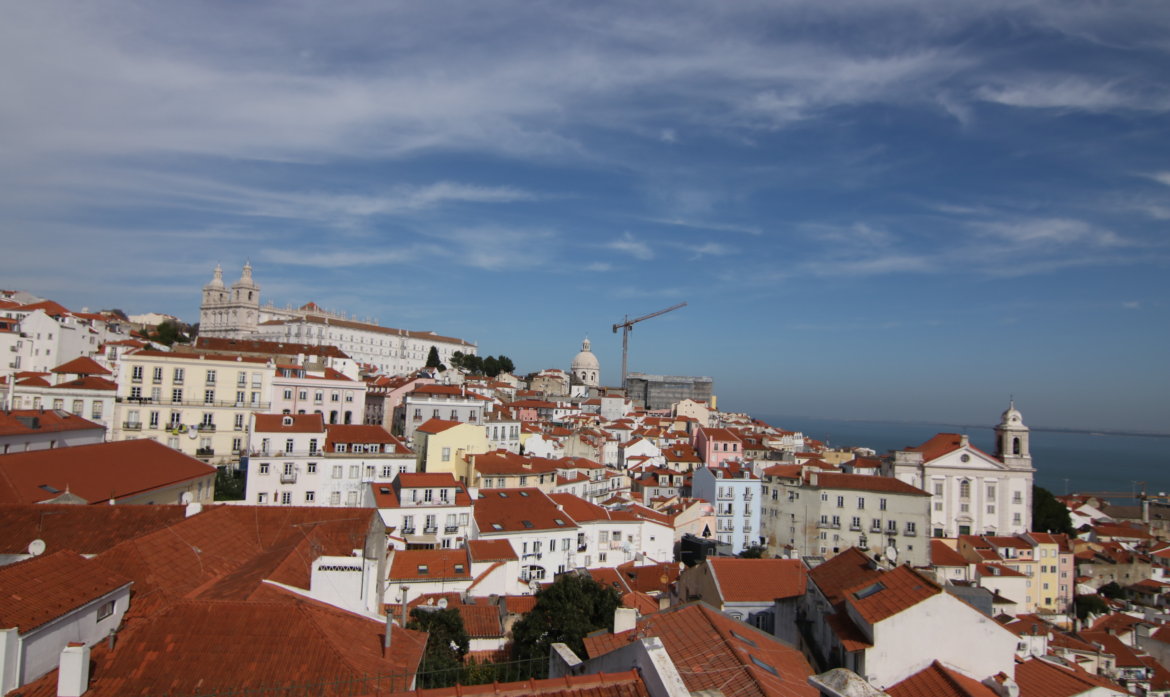The first trip in a while…
After relocating to the UK a few months ago, going to Lisbon was spur of the moment trip. I was looking for somewhere to fly to, within a short distance from London, to escape the English rain, and sunshine had to be a given!
The stunning capital of Portugal was the perfect destination. Unfolding over seven hills, this city offers a rich history, beautiful Mediterranean cuisine, glorious weather and a combination of historic and modern architecture.
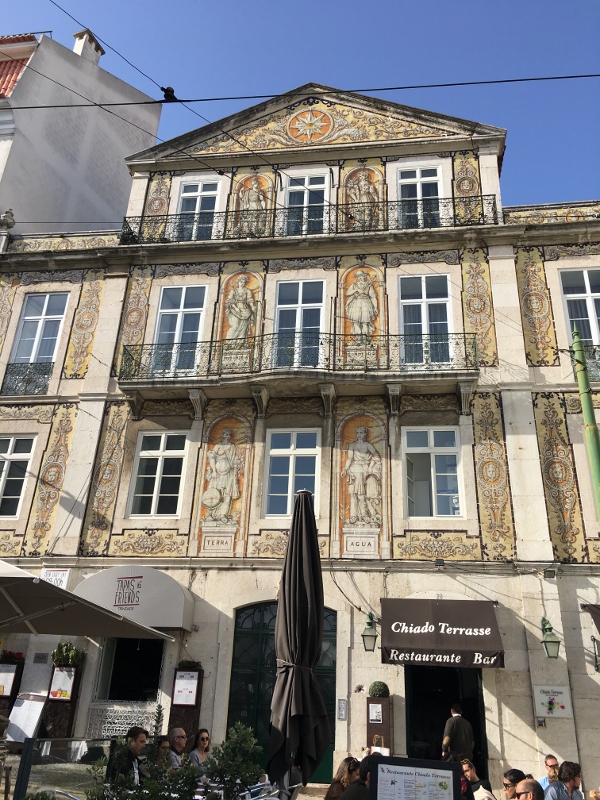
Old town:
Lisbon is known for its artistic flair, visible in every part of town, from street art to electric bars. Quiet by day and lively at night, Rua da Rosa street is one of the best-known streets in the Bairro Alto neighbourhood. (Not to be mistaken for the Instagram famous pink street, which is a different street) This narrow-cobbled street is known for its hypnotic bars and bohemian restaurants. We had dinner at one of the restaurants, mostly frequented by locals.
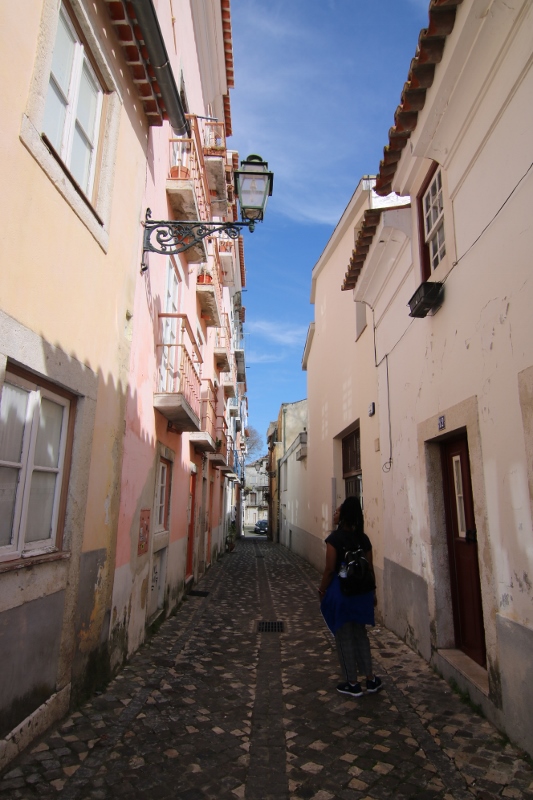
Old Town by foot:
Stroll down the cobbled stoned lined streets and lanes to find a rugged old town landscape that will have you wandering from secluded courtyards overlooking medieval quarters to terraces where you can take in the whole city. These cobbled lanes are postcard perfect by day and seamlessly transforms into a party scene at night.
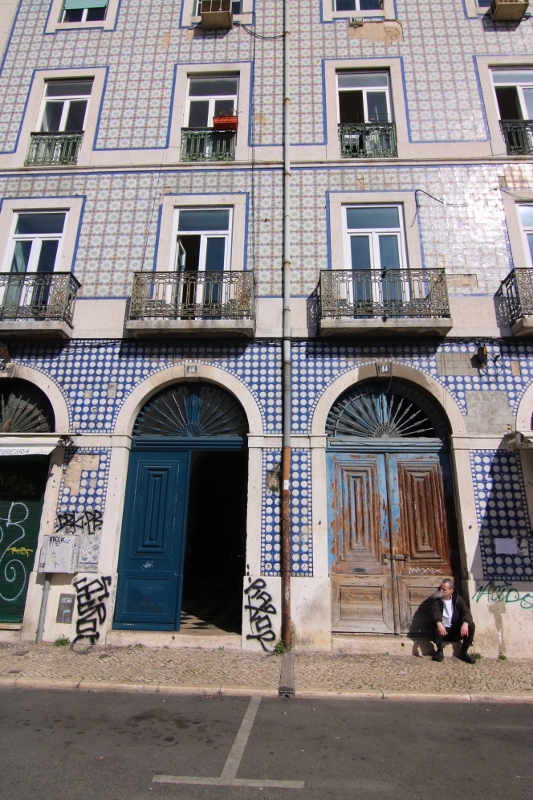
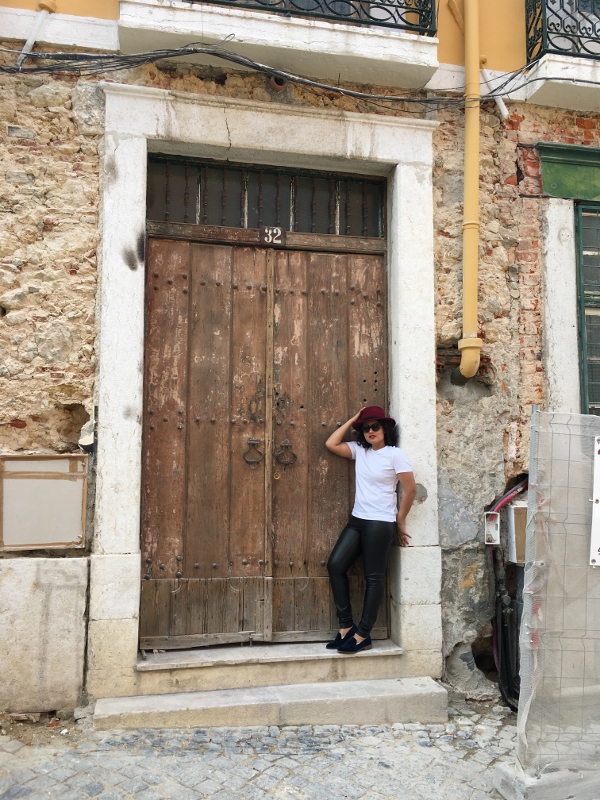
The Yellow Tram:
Rattling along the steep hills, you’ll find the classic yellow tram. If travelling in a vintage mode of transport appeals to you, try the Tram 28 E, which takes you around the centre of town. The 28 tram is very popular with tourists, so expect long queues. At Martim Moniz station you have a better chance of getting onto the tram or finding a seat. Sadly, pickpockets do operate on this tram as it is a tourist magnet, so you need to look after your personal belongings. There are alternative trams other than tram 28. We walked to Praça do Comércio or Terreiro do Paco, as it is locally known, and took other trams from there.
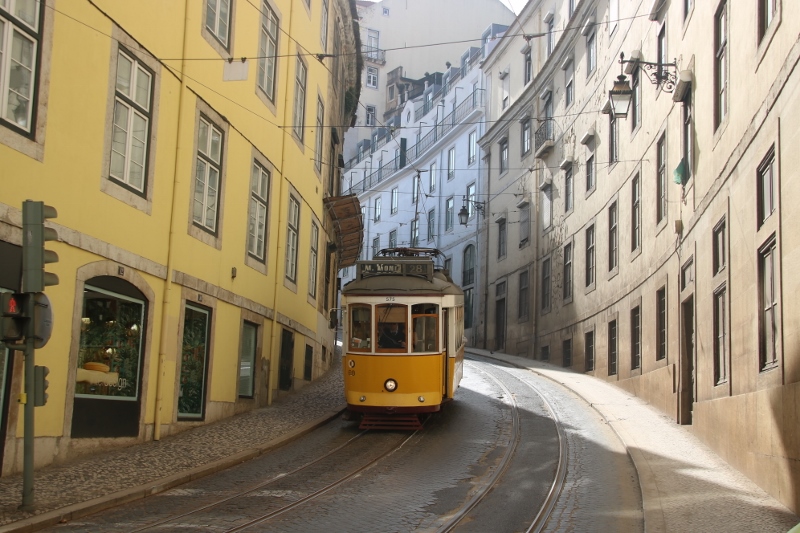
Azulegos Tiles:
Portugal is famous for its Azulegos tiles, which is an inherent part of the culture. The elaborately painted tiles are a dominant feature on many residential building’s museums and metro stations. While the tiles fell out of favour, a revival in the 1950’s means you can find modern tile artwork dotted around Lisbon.
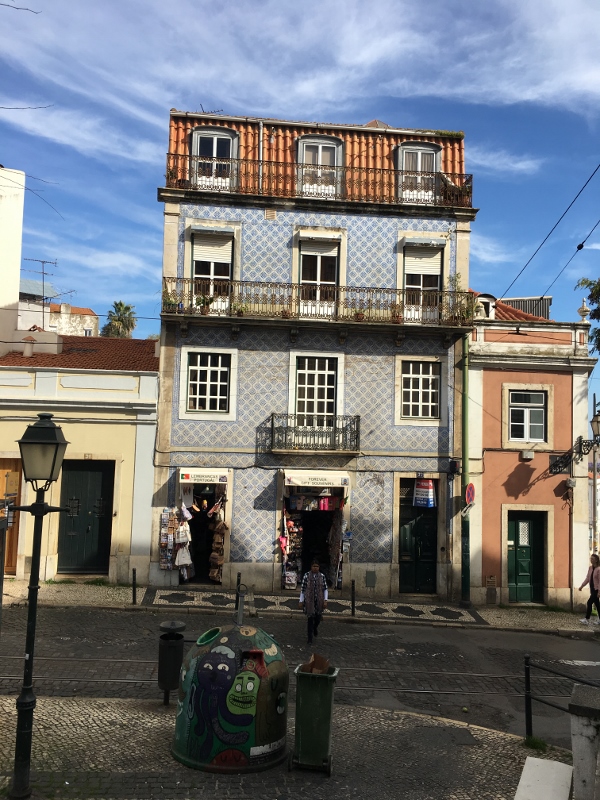
Pastel de Nata:
This is a Portuguese tart with an custard egg filling, served in a pastry shell. Baked to perfection at 200 degrees, it is traditionally served dusted with cinnamon and icing sugar. There are bakeries all over town to try them from, and with a bakery around nearly every corner, you will have no problem finding a spot to try them. While some of the larger and Instagram famous bakeries have long queues of tourist wanting to try their pastries, a lesser known local bakery won the award for the best pasteis de natas. Proof that you don’t have to queue for the best pasteis in town! After trying them in supermarkets, local bakeries, my favourite pastel de nata were the ones I bought at Fabrica da Nata, in the Old town.
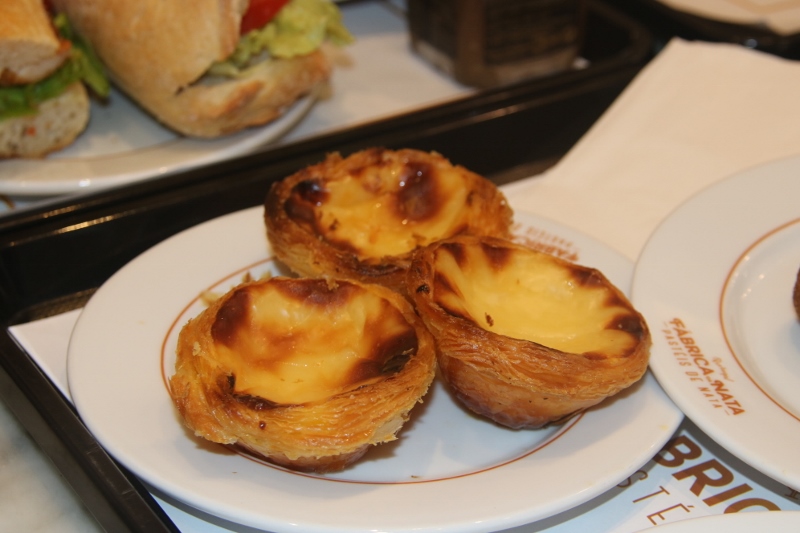
Architecture:
Campo Pequeno:
This iconic monument of Lisbon is located in the historic Baixa district. It is built in the Neo-Arabic architecture style. (Campo Pequeno translates into small field) It is located behind Campo Pequeno square. The bullring underwent extensive renovations and re-opened in 2006. While Campo Pequeno is the bullring building of Lisbon it also serves as an event venue. At the time of our visit, there was an exhibition of traditional matador and Spanish clothing. The building houses a shops at lower ground, including a supermarket and souvenir stores, some selling typical Portuguese souvenirs like canned fish, crockery, etc. I found these stores better priced than some of the stores in Lisbon old town.
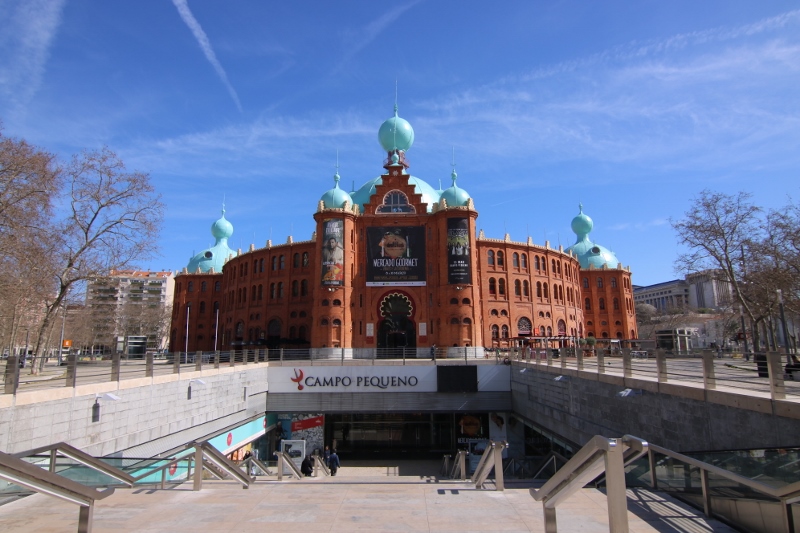
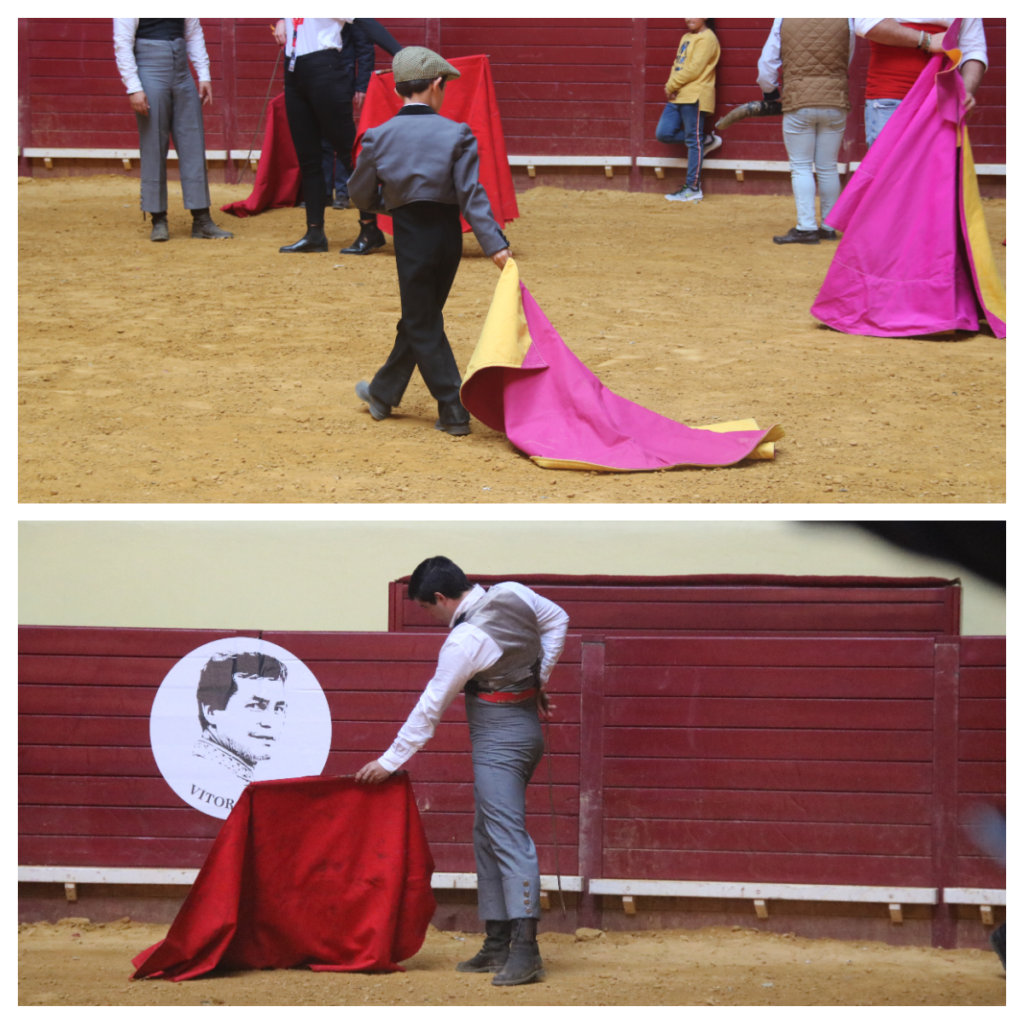
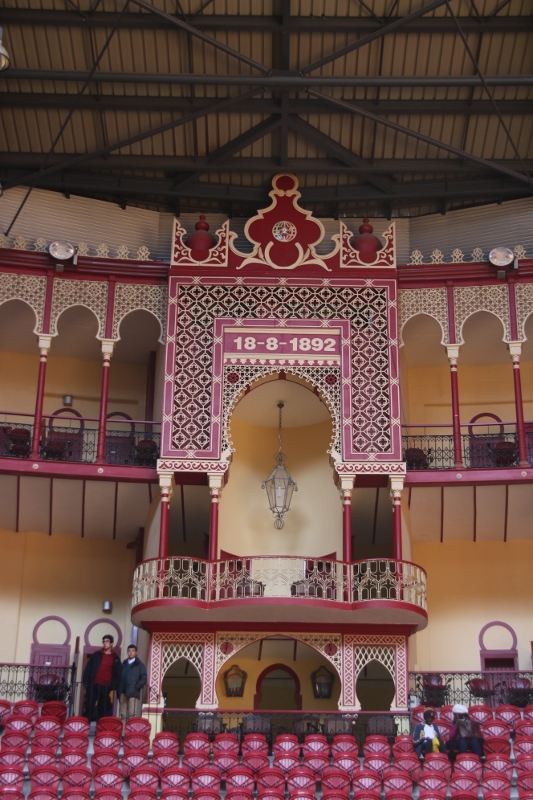
The Carmo Church Ruins and Archaelogical museum:
This church was one of the most beautiful Gothic style temples in Lisbon. An earthquake in 1955 cause some serious damage to the building and destroyed most of its contents. Reconstruction stopped when religious orders were abolished in Portugal in 1843, . The building structure with its Gothic arches remain, the roofless central nave is open to the sky.

What once was the altar of a catholic church, now houses a museum. A small but interesting collection of artefacts are on display in the museum and date back to the 4 th century. The most interesting artefact I found was 2 mummies with hair intact! Beautiful architecture, including vault structures built in brick.
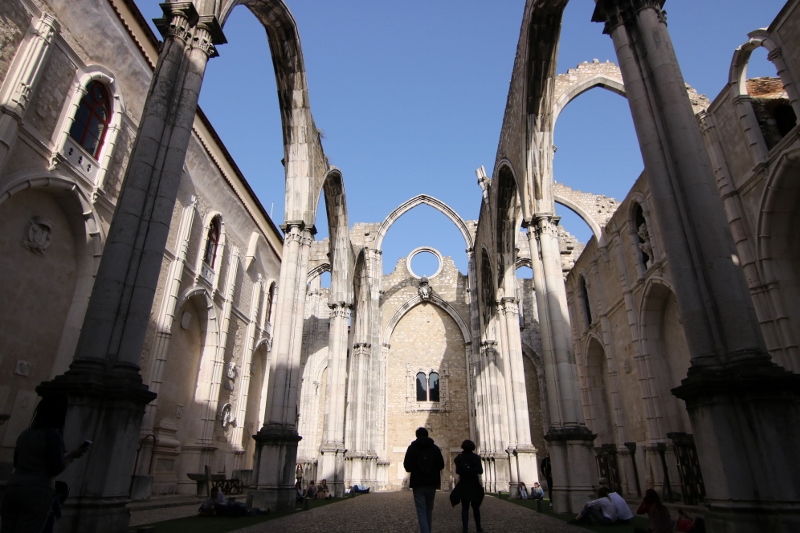
New World: A stroll through Gare do Oriente:
Designed by Architect and Engineer, Santiago Calatrava, the train station and link between the previous separated areas of the Olivais District, is found in the modern part of Lisbon. The train station was a must see for myself and my Architect friend on this trip. The terminal connects various modes of transport and is one of Europe’s most comprehensive transport nodes.
Calatrava does not disappoint with the slender, modern structure designs. A series of 5 rows of double metal and glass ‘trees’ form an interlocking roof that covers the upper level platforms. A beautiful sight to behold and space to be in. You can access the platforms via stairs or glass lifts from the upper levels without the need to purchase a ticket.
On the opposite side of the station you can find the Vasco Da Gama shopping mall. This is another building with unique architectural features and good views of the Targus River. It is located 5 minutes from the airport and 10 minutes from the city centre, accessible by various modes of transport.
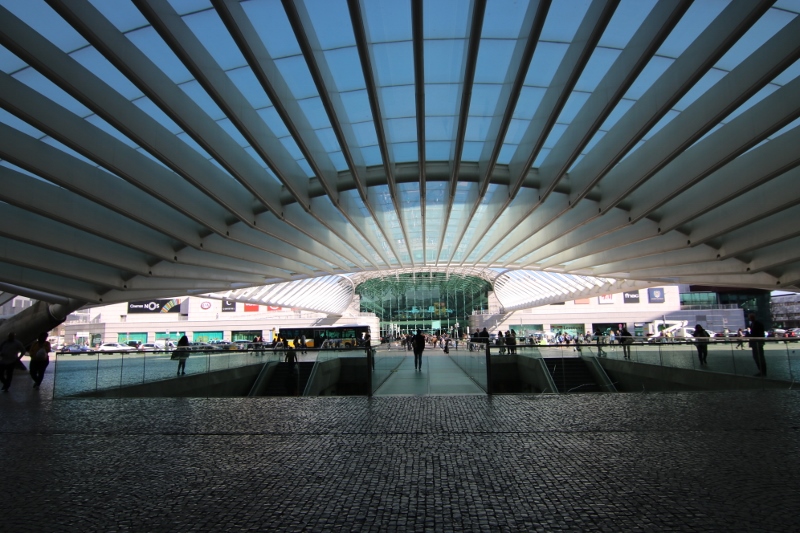
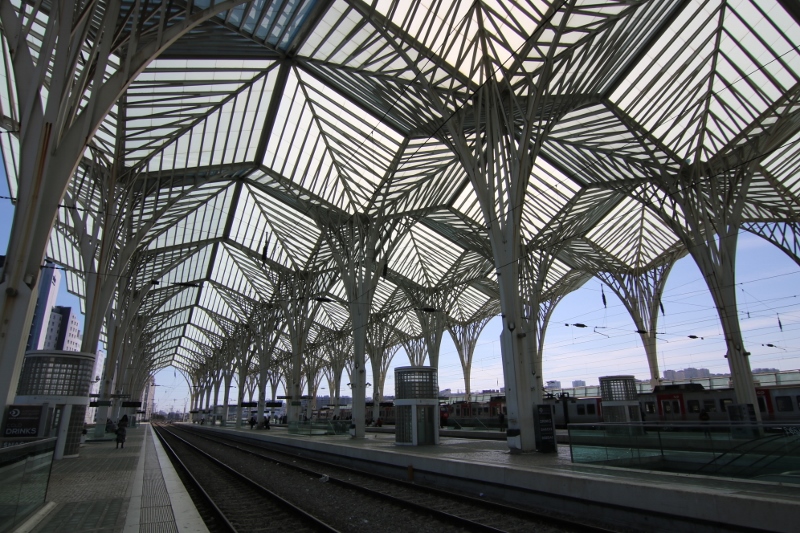
Praça do Comércio:
Praça do Comércio or Terreiro do Paco, as it is locally known, is one of the largest plazas in Europe. Walk through the commercial street through the archway, to lead you to the Targus River. Traditional buildings lines 3 sides of the square. For a small fee, you can go to the viewing platform at the top of Arco da Rua Augusta, for views over the plaza. The plaza is perfect for late night strolls.
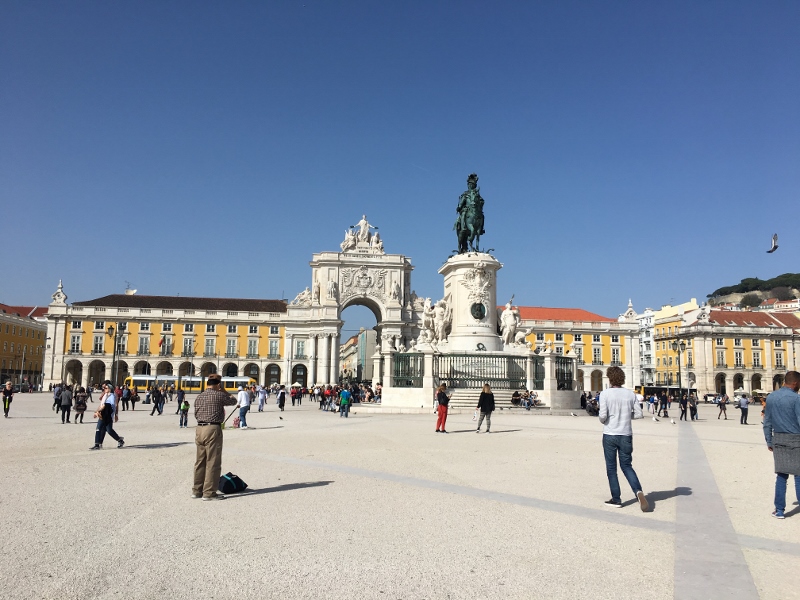
After Hours:
One of the most popular streets in Lisbon is Rua Nova do Carvalho, aka Pink street. The famous red-light district was part of the 2013 urban regeneration project. After the area underwent an overhaul, the street between the bars and clubs painted pink, and Pink Street was born. If clubbing and street parties are your scene, this is the best place to go.

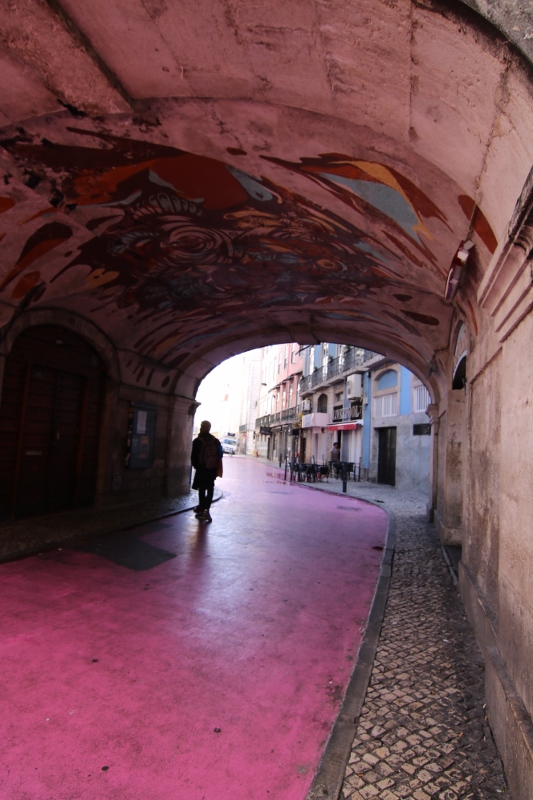
Interesting gifts:
Ceramics:
Portugal is famous for its Azulejos tiles. Many historic buildings are cladded with them. You can buy vintage, traditional or modern hand painted tiles for use in your home or sold as souvenirs.
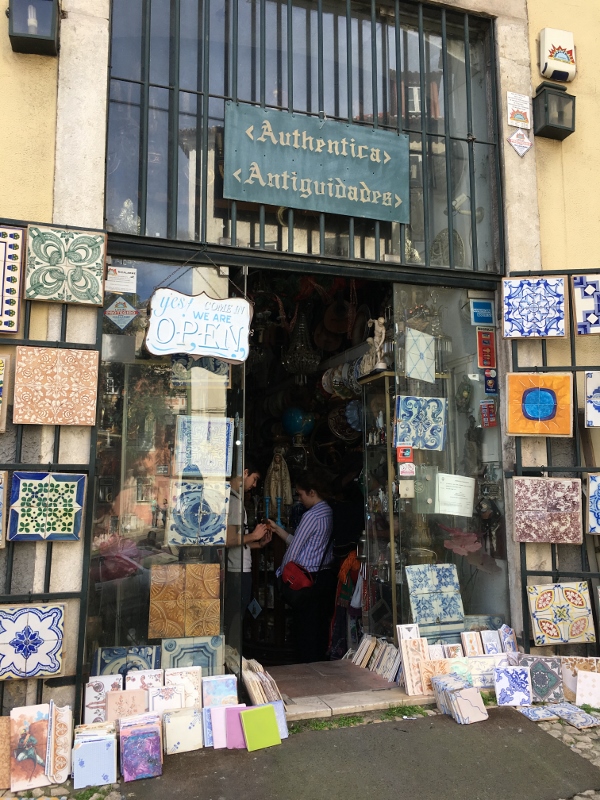
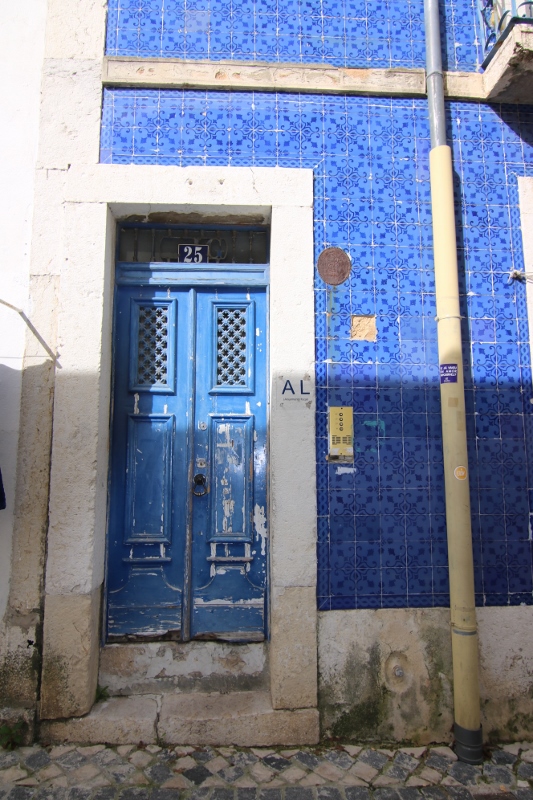
Canned Fish:
Canned Fish is popular in Portugal. There is much more than canned fish than sardines. Choose from Tuna, Anchovy, Octopus, Salmon, and they come in a variety of flavours. The city centre has dedicated canned fish shops where you can by these colourfully packaged fish. Perfect for a small unusual gift.
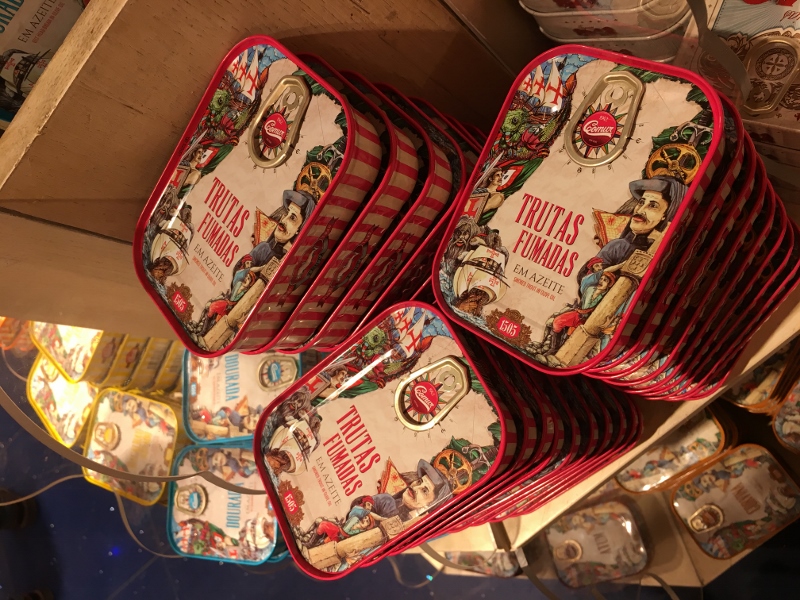
Cork:
Did you know Cork is one of Portugal’s largest exports? Other than cork bottle stoppers but you can find other unusual cork products in the city. Think umbrellas, bags, shoes and other household items.
Getting around:
We found 24-hour travel cards the most cost effective way to travel around the city. It is very easy to get around the old town and most attractions are within walking distance. There is so much to do in Lisbon, we barely scratched the surface when we where there. It helps if you decide beforehand what it is you want to do for the time you are visiting.
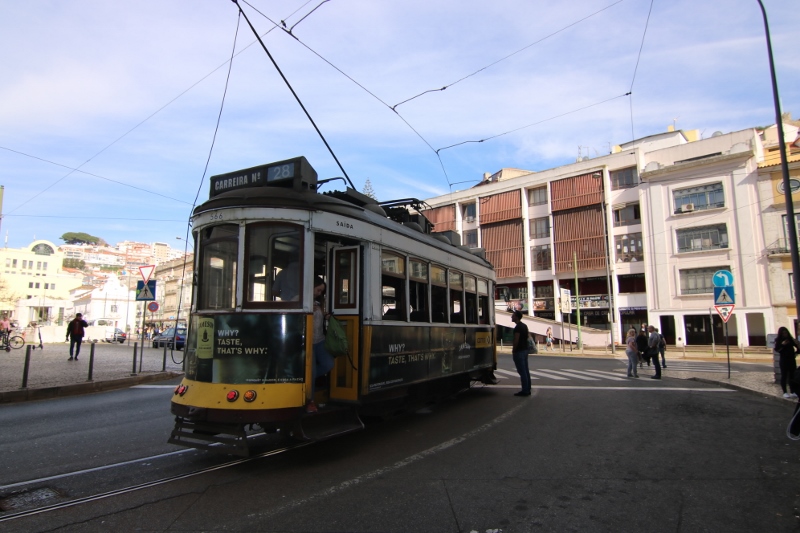
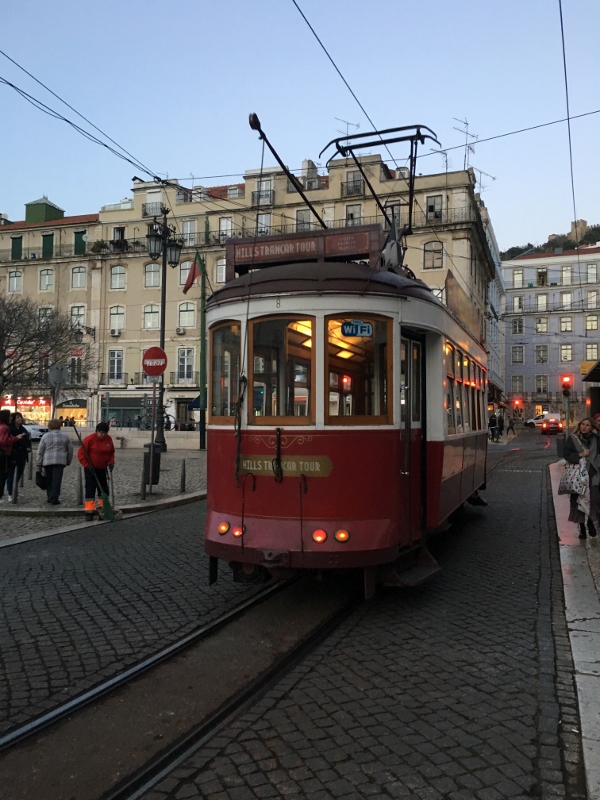
Where we stayed:
We stayed at the Jupiter Lisboa hotel. A modern hotel located in downtown Lisbon. The hotel boasts an indoor spa with pool, sauna and a well-equipped gym. With a rooftop bar with outdoor pool, you don’t have to leave the hotel to enjoy views of the city. The hotel is within walking distance of the to Campo Pequero and the metro station.
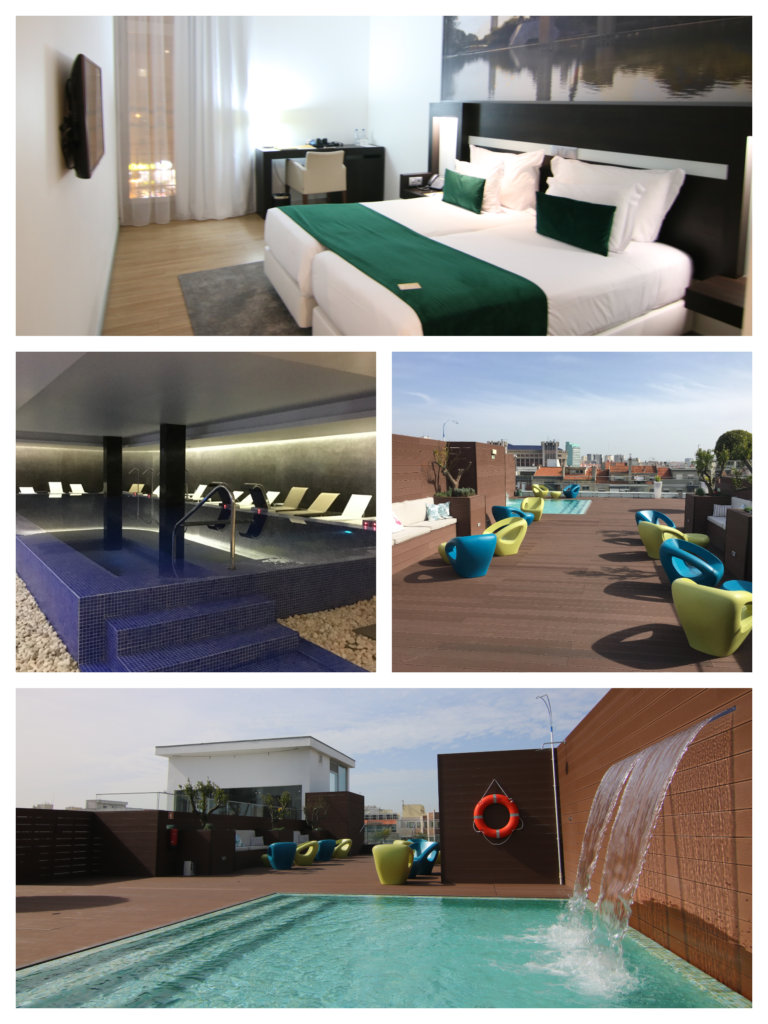
Getting to Lisbon:
We flew with British Airways from London. There are various low-cost airlines that flies to Lisbon, but they usually fly from the more remote airports and you can expect early morning or late-night flights.
Read more on my next post:
Look out for my next post on fabulous food in Lisbon. Until next time, Adventure Awaits.
Mrs. L.

